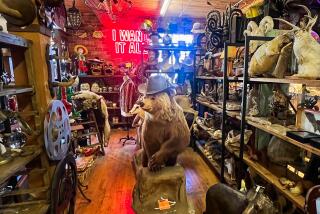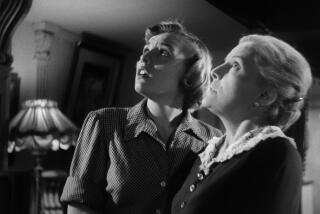TCM Classic Film Festival to be in L.A. from Thursday to Sunday
- Share via
Preserving our film heritage is an arduous, time-consuming task. Kinetic and ever evolving, film preservation runs the gamut from high-tech digital restoration to hand-picking dirt off a negative.
The many preserved films screening at the TCM Classic Film Festival — running Thursday through Sunday at the Grauman’s Chinese, the Mann Chinese 6 and the Egyptian Theatre — have all been restored to their former glory through one means or another.
The festival opens at the venerable Grauman’s with the premiere of Warner Bros.’ new digital restoration of the 1954 classic “A Star Is Born,” with Judy Garland and James Mason in the Oscar-nominated lead roles. The film is a musical version of the 1937 drama about an actress on the rise who marries a dipsomaniac actor whose career is on the skids. The lavish, three-hour movie directed by George Cukor wasn’t a hit upon release; about 30 minutes — including two musical numbers — were excised shortly after it opened to try to squeeze in some more viewings.
The late film historian Ron Haver restored the film in 1983 to its original length using the soundtrack with rediscovered footage and production stills.
“What Ron Haver did was basically to reconstruct the film to the best of his ability,” says George Feltenstein, senior vice president of the theatrical catalog for Warner Home Video. “But at that time there wasn’t a digital restoration of the film itself.”
Because of the flaws with early CinemaScope lenses, the original negative had jumps at the end of every splice. And the movie was turning red because the yellow layer of the Eastman color stock was fading.
Because Warner is releasing the film on Blu-ray in June, it was imperative that the film be restored. “It has taken over 21/2 years,” Feltenstein says. “You are dealing with a very long film and an enormously complex piece of film.”
The Museum of Modern Art, which is also represented in the festival, prefers to restore its films in the traditional hands-on photochemical style.
“We haven’t embarked on the digital frontier yet,” says Katie Trainor, film collections manager. “We are waiting for the right title to consider. We very much believe in the photochemical process.”
But the audio of its three films in the festival, “The Big Trail” from 1930, 1929’s “Sunnyside Up” and 1933’s “The Story of Temple Drake,” was digitally restored. “It has been told to me that Fox, when they were recording their sound, it wasn’t of the best quality. They were printing it too late, which makes the sound not optimal. Digital audio work restores it to what is believed the best sound at the time.”
“The Story of Temple Drake,” based on William Faulkner’s controversial 1931 novel, “Sanctuary,” revolves around a society girl (Miriam Hopkins) who is raped by a big-time gangster (Jack La Rue). The film caused such an uproar that it led to the strengthening of the rules of the Production Code. It was even pulled from release.
TCM is billing the Saturday evening screening as a work-in-progress restoration. “The normal time frame to do a real, true photochemical preservation is that you have to give yourself six to eight months because of the labs,” Trainor says. But MOMA and TCM began talking about “Temple” in December, so the process was accelerated, with a lab in Pennsylvania working nonstop on the film. What it is unveiling Saturday, Trainor says, “is very close to the finished product.”
Michael Hyatt spent years working on the restoration of the original negative of the 1963 British sci-fi classic “The Day of the Triffids,” starring Howard Keel and Janette Scott.
“Because scratches occur on the emulsion side of an original negative,” he explains, it is put through a bath that is “made out of basically water. The intention is to make the emulsion swell up and make the scratches disappear. You are supposed to use perfectly clean water in a clean tank. What happens to the film is if the water in the tank is dirty, all of the residue at the bottom of the tank settles back on the emulsion and it bonds on it. So nothing will take it off.”
The end result is that the prints made from these dirty negatives are filled with white snowy star figures.
Hyatt says one can either do a digital fix or take the dirt off one speck at a time. He opted for the one-speck process. “I went through the negative with a needle over a period of several years. Some frames had as many as six or 10 specks on them.”
Hyatt doesn’t use any special needles. “I just use the sharpest needle you can get. You develop a Zen relationship with the film. It’s not quite as difficult as it sounds, but you have to be very careful. You are really getting to the original image — you can’t get any closer than that. The end results are spectacular.”
More to Read
Only good movies
Get the Indie Focus newsletter, Mark Olsen's weekly guide to the world of cinema.
You may occasionally receive promotional content from the Los Angeles Times.











